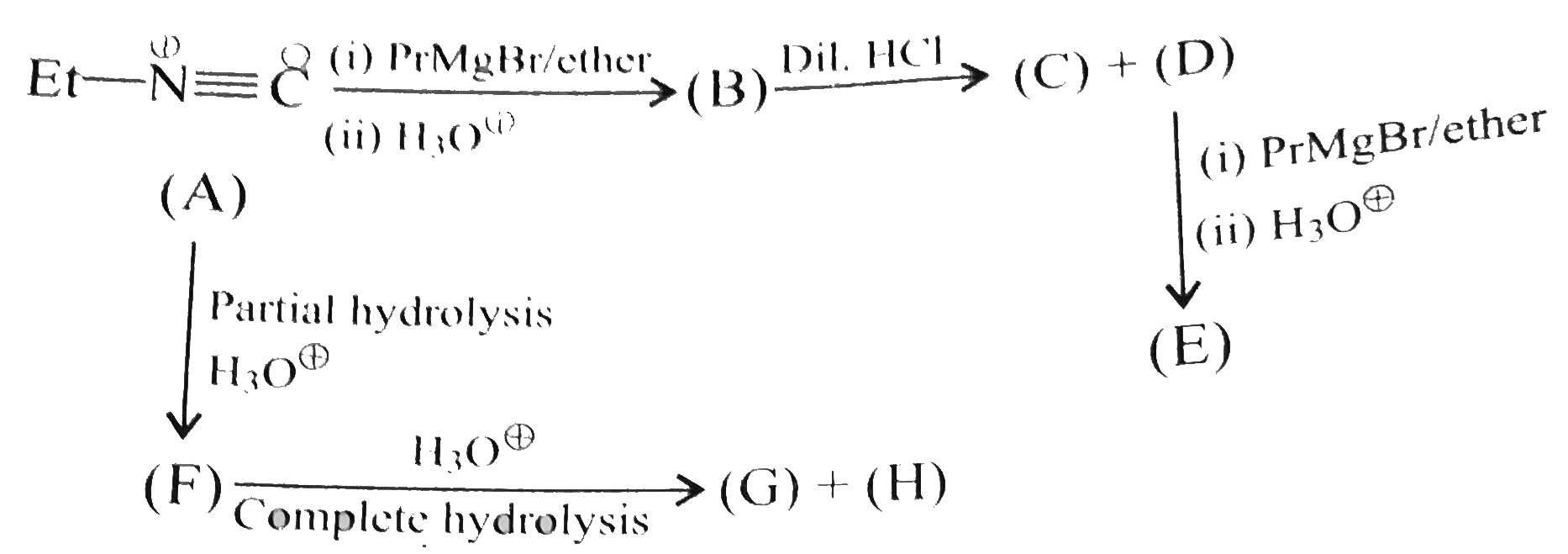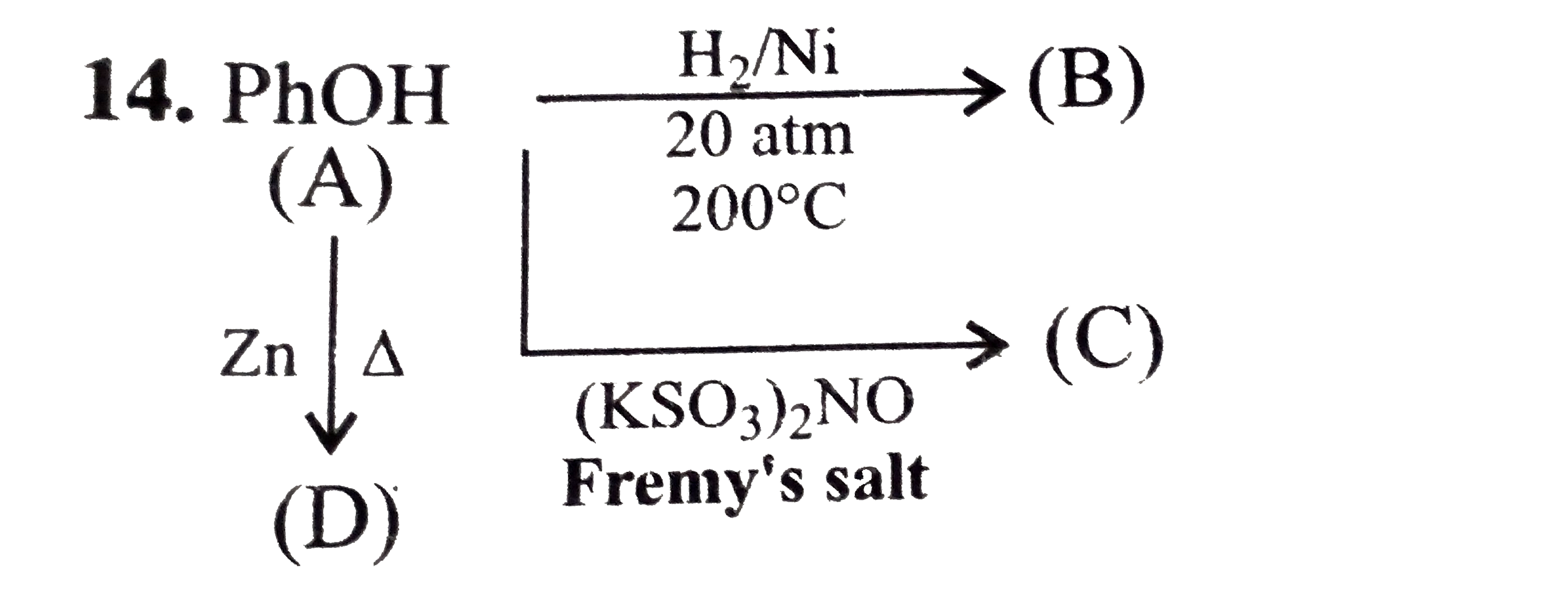
The compounds (B) and (C ), respectively, are:
A
a.
B
b.
C
c.
D
d.
Video Solution
Text Solution
The correct Answer is:A
1 DU in (A) shows that (A) contains one (C=C) bond. The position of the (C=C)bond has to be located.
the number ofCatoms in(A),(B),(C)and(D)would be six.
(D) on ozonolysis given only one compound (E). It means that two moles of (E) containing three C atoms have formed.
Three-C ketone which gives iodoform test can be only acetone (MeCOMe). (It cannot be an aldehyde since it gives a positive Tollens test).

|
Topper's Solved these Questions
- REDUCTION AND OXIDATION REACTION OF ORGANIC COMPOUNDSBOOK - CENGAGE CHEMISTRYCHAPTER - REDUCTION AND OXIDATION REACTION OF ORGANIC COMPOUNDSEXERCISE - Exercise (Multiple Correct)
35 Videos
- REDUCTION AND OXIDATION REACTION OF ORGANIC COMPOUNDSBOOK - CENGAGE CHEMISTRYCHAPTER - REDUCTION AND OXIDATION REACTION OF ORGANIC COMPOUNDSEXERCISE - Exercise (Single Correct)
90 Videos
- REDUCTION AND OXIDATION REACTION OF ORGANIC COMPOUNDSBOOK - CENGAGE CHEMISTRYCHAPTER - REDUCTION AND OXIDATION REACTION OF ORGANIC COMPOUNDSEXERCISE - Exercise
11 Videos
- QUALITATIVE INORGANIC SALT ANALYSISBOOK - CENGAGE CHEMISTRYCHAPTER - QUALITATIVE INORGANIC SALT ANALYSISEXERCISE - Viva Voce Questions And Part-C (Analysis Of Cations)
42 Videos
- SOLID STATEBOOK - CENGAGE CHEMISTRYCHAPTER - SOLID STATEEXERCISE - Ex 1.2 (Objective)
9 Videos
Similar Questions
Knowledge Check

The compound (B) and (C ), respectively, are:Aa. Bb.
Bb. Cc.
Cc. Dd.
Dd.

The compounds (C) and (D), respectively, are :AEtNH2 and PrCH=OBEt−NH−Pr and HCOOHCPrNH2 and EtCH=ODEtNH2 and PrCH2OH.
The compounds (B), (C ), (D), respectively are:ACyclohexanol, benzene, and p-quinoneBBenezene, cyclohexanol, and p-quinopneCp-Quinoue, cyclohexanol, and benezeneDCyclohexanol, p-quinone, and benzene

Compounds (A) and (B) respectively are :
View Solution
Compounds (B) and (C) are:
View SolutionCH3C≡CCH3H2/Pt−−−→AD2/Pt−−−→B The compounds A and B, respectively are
View SolutionThe reaction of H3N3B3Cl3(A) with LiBH4 in tetrahydrofuran gives inorganic benzene (B). Further, the reaction of (A) with (C) leads of H3N3B3(Me)3. Compounds (B) and (C) respectively , are :
View SolutionEthanoic acid on heating with ammonia forms compound A which on treatment with bromine and sodium hydroxide gives compound B. Compound B on treatment wnh NaNO2/dil HCl gives compound C. The compounds A. B and C respectively are :
View Solution

